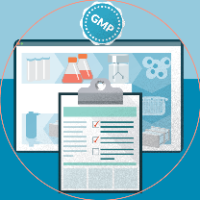Process development: how to win the race in cell & gene therapy
Cell & Gene Therapy Insights 2020; 6(10), 1351–1356
10.18609/cgti.2020.147
Robust and reproducible manufacturing processes are a critical differentiator in an increasingly competitive and crowded cell and gene therapy space. The FDA predicts that more than 200 IND applications will be filed per year from 2020 onwards, and 10–20 cell and gene therapy products will be approved annually by 2025 [1]FDA. Statement from FDA Commissioner Scott Gottlieb, M.D. and Peter Marks, MD, PhD, Director of the Center for Biologics Evaluation and Research on new policies to advance development of safe and effective cell and gene therapies. 2019: https://www.fda.gov/news-events/press-announcements/statement-fda-commissioner-scott-gottlieb-md-and-peter-marks-md-phd-director-center-biologics. As more products make it to market, manufacturing processes are expected to improve as well. With over 1,000 clinical trials currently ongoing worldwide [2]ARM. Innovation in the Time of COVID-19. ARM Global Regenerative Medicine & Advanced Therapy Sector Report. H1 2020: http://alliancerm.org/wp-content/uploads/2020/08/ARM_1H-Report_-FINAL.pdf, not every product is going to make it to the finishing line, let alone win the race to commercial success. Apart from clinical efficacy and safety, robustness and reproducibility of manufacturing processes are crucial to the ultimate success or failure of a product.
As more products are launched, some of the determinants of clinical and commercial success are being continuously re-defined. Obtaining regulatory approval for a product is a necessary but not guaranteed condition for success. Therapeutics developers with a first-to-market product with sound clinical data but poor manufacturing processes are in a fragile position to win the commercialization race. But one key success factor that will remain constant is the manufacturing process. As frequently quoted in the cell and gene therapy industry: “the product is the process and the process is the product”.
There are four key inter-connected variables exerting pressure on therapeutics developers to improve their processes earlier in the product’s development:
1. Relatively short length of cell & gene therapy clinical development, compared to traditional biologics
The average time from IND filing to market for monoclonal antibodies is around 7-8 years [3]Natanson L. New report shows monoclonal antibody development times are lengthening, biotech companies continue to drive innovation. BIO. 2011: https://archive.bio.org/articles/new-report-shows-monoclonal-antibody-development-times-are-lengthening[Kite], [a Gilead company], [Kymriah® Novartis], [and Tecartus® Kite], [a Gilead company)][4]FDA. Summary Basis for Regulatory Action – YESCARTA. 2017: https://www.fda.gov/media/108788/download, [5]FDA. Summary Basis for Regulatory Action – KYMRIAH. 2017: https://www.fda.gov/media/107962/download, [6]FDA. BLA Clinical Review Memorandum – TECARTUS. 2020: https://www.fda.gov/media/141165/download. The main driver for reduced development times is the changed clinical trial paradigm. It is not uncommon for a Phase 2 clinical trial to be positioned as “pivotal” – for example, Celgene/BMS and Bluebird Bio’s bb2121 CAR-T program – KarMMa Phase 2 pivotal study [7]Bluebird Bio. Updated Results of Ongoing Multicenter Phase I Study of bb2121 anti-BCMA CAR T Cell Therapy Continue to Demonstrate Deep and Durable Responses in Patients with Late-Stage Relapsed/Refractory Multiple Myeloma at ASCO Annual Meeting. 2020: http://investor.bluebirdbio.com/news-releases/news-release-details/updated-results-ongoing-multicenter-phase-i-study-bb2121-anti, or Poseida’s P-BCMA-101 pivotal Phase 2 trial [8]Costello CL et al. Phase 2 Study of the Response and Safety of P-Bcma-101 CAR-T Cells in Patients with Relapsed/Refractory (r/r) Multiple Myeloma (MM) (PRIME). Blood 2019; 134 (Supplement 1): 3184.. Positioning Phase 2 (or, combined Phase 1/2) as pivotal puts a pressure on therapeutics developers to have a robust and reproducible manufacturing process already in place for Phase 1/2.
2. Indication crowding and fierce competition in cell & gene therapy industry
Therapeutic indication crowding has been cited as a concern in the cell and gene industry [9]Harris E. Why is Indication Crowding A Concern? Cell & Gene 2019: https://www.cellandgene.com/doc/why-is-indication-crowding-a-concern-0001, as multiple therapeutics developers target the same diseases. This is particularly relevant in the context of rare diseases and potentially curative therapies. Unlike traditional therapeutic approaches, cell and gene therapies for rare diseases have the potential to be curative and as patients are “cured”, the already relatively small patient population shrinks. There are, for example, at least 15 gene therapy candidates in clinical development for Duchenne muscular dystrophy (DMD), 11 products in clinical development for hemophilia B, and 9 clinical products for Beta-Thalassemia [10]Rittié L et al. The Landscape of Early Clinical Gene Therapies outside of Oncology. Mol. Ther. 2019; 27(10): P1706–1717.. The commercial implications of this cannot be overlooked and contribute to the highly competitive nature of the sector.
In addition to efficacy and safety, optimizing a product’s manufacturing process can be a key differentiator among competitors. Furthermore, post-approval commercial success can also be impacted by manufacturing issues. For example, Novartis has been able to successfully ship its Kymriah product 90% of the time, with the failures attributed to out-of-specification and manufacturing issues [11]Pagliarulo N. Novartis still hasn’t solved its CAR-T manufacturing issues. BioPharma Dive 2019: https://www.biopharmadive.com/news/novartis-kymriah-car-t-manufacturing-difficulties-cell-viability/568830/. In contrast, Gilead, claimed 97% of manufacturing success for Yescarta [12]Hargreaves B. Yescarta to Europe: Steps learned and production 97% on-spec. BioPharma-Reporter 2019: https://www.biopharma-reporter.com/Article/2019/04/01/Gilead-produces-97-on-spec-Yescarta.
3. Robustness of the process as a critical evaluation criterion by investors
Historically, biotech companies have been rushing to show clinical data to impress investors. This has been particularly critical to smaller biotech companies with fragile cash positions and a high burn rate. Much of the innovation in cell and gene therapy comes from smaller sized biotech companies, with 90% of the development estimated to come from companies with fewer than 500 employees [13]Capra E, Smith J, Yang G. Gene therapy coming of age: Opportunities and challenges to getting ahead. McKinsey & Company 2019: https://www.mckinsey.com/industries/pharmaceuticals-and-medical-products/our-insights/gene-therapy-coming-of-age-opportunities-and-challenges-to-getting-ahead#. The quality and robustness of a company’s manufacturing process is already a crucial factor taken into account by investors to evaluate possible investment options [14]Crean DH. The Cell & Gene Therapy Market: Coming into Its Own. Pharma Boardroom 2019: https://pharmaboardroom.com/articles/the-cell-gene-therapy-market-coming-into-its-own/. As the field matures with landmark approvals (Yescarta®, Kymriah®, Luxturna®, Zynteglo™, Tecartus™) and late stage pipelines, investors are bound to pay even more attention to manufacturing processes when evaluating the commercial viability of a product. Clinical data alone is not enough to guarantee commercial success.
4. FDA’s determination to scrutinize manufacturing process
Despite and maybe because of shortened development timelines, the FDA is determined to scrutinize manufacturing process, including as a pre-requisite for approval. In May 2020, the FDA sent a strong message in this regard by refusing to review a BLA submission by BMS and Bluebird Bio for idecabtagene vicleucel (ide-cel; bb2121) [15]Business Wire. Bristol Myers Squibb and bluebird bio Provide Regulatory Update on Idecabtagene Vicleucel (ide-cel, bb2121) for the Treatment of Patients with Multiple Myeloma. 2020: https://www.businesswire.com/news/home/20200513005210/en/Bristol-Myers-Squibb-bluebird-bio-Provide-Regulatory. BMS announced that the regulatory agency had raised concerns regarding the manufacturing component rather than clinical/non-clinical data [16]Blankenship K. Bristol Myers Squibb in hot water after FDA rebuffs CAR-T therapy on manufacturing concerns. Fierce Pharma 2020: https://www.fiercepharma.com/pharma/bristol-myers-squibb-hot-water-after-fda-rebuffs-car-t-therapy-manufacturing-concerns. In August 2020, in another widely publicized example, the FDA questioned whether Mesoblast’s manufacturing process allows for the consistent production of “lots of acceptable quality” for remestemcel-L [17]FDA. ODAC Briefing Document. BLA 125706 Remestemcel-L. 2020: https://www.fda.gov/media/140988/download, mesenchymal stromal cells (MSC)-based therapy indicated to treat pediatric patients with steroid-refractory acute graft-vs-host disease (SR-aGVHD).
These four drivers require the strategic imperative for therapeutic developers to focus on the quality of their process as early as possible in the development of their product, to maximize potential commercial success. By developing a robust and reproducible process early on, companies also avoid expensive and time-consuming comparability and bridging studies, which would be needed if they were to change the process at a later stage of development. Process development is the most critical element during the entire race of drug development and commercialization, affecting both clinical and business outcomes. As the industry matures, the speed to successful commercialization inevitably trumps the speed to market. The race to success in cell and gene therapy is a marathon, not a sprint. And how you start matters.
References
1. FDA. Statement from FDA Commissioner Scott Gottlieb, M.D. and Peter Marks, MD, PhD, Director of the Center for Biologics Evaluation and Research on new policies to advance development of safe and effective cell and gene therapies. 2019: https://www.fda.gov/news-events/press-announcements/statement-fda-commissioner-scott-gottlieb-md-and-peter-marks-md-phd-director-center-biologics Crossref
2. ARM. Innovation in the Time of COVID-19. ARM Global Regenerative Medicine & Advanced Therapy Sector Report. H1 2020: http://alliancerm.org/wp-content/uploads/2020/08/ARM_1H-Report_-FINAL.pdf Crossref
3. Natanson L. New report shows monoclonal antibody development times are lengthening, biotech companies continue to drive innovation. BIO. 2011: https://archive.bio.org/articles/new-report-shows-monoclonal-antibody-development-times-are-lengthening Crossref
4. FDA. Summary Basis for Regulatory Action – YESCARTA. 2017: https://www.fda.gov/media/108788/download Crossref
5. FDA. Summary Basis for Regulatory Action – KYMRIAH. 2017: https://www.fda.gov/media/107962/download Crossref
6. FDA. BLA Clinical Review Memorandum – TECARTUS. 2020: https://www.fda.gov/media/141165/download Crossref
7. Bluebird Bio. Updated Results of Ongoing Multicenter Phase I Study of bb2121 anti-BCMA CAR T Cell Therapy Continue to Demonstrate Deep and Durable Responses in Patients with Late-Stage Relapsed/Refractory Multiple Myeloma at ASCO Annual Meeting. 2020: http://investor.bluebirdbio.com/news-releases/news-release-details/updated-results-ongoing-multicenter-phase-i-study-bb2121-anti Crossref
8. Costello CL et al. Phase 2 Study of the Response and Safety of P-Bcma-101 CAR-T Cells in Patients with Relapsed/Refractory (r/r) Multiple Myeloma (MM) (PRIME). Blood 2019; 134 (Supplement 1): 3184. Crossref
9. Harris E. Why is Indication Crowding A Concern? Cell & Gene 2019: https://www.cellandgene.com/doc/why-is-indication-crowding-a-concern-0001 Crossref
10. Rittié L et al. The Landscape of Early Clinical Gene Therapies outside of Oncology. Mol. Ther. 2019; 27(10): P1706–1717. Crossref
11. Pagliarulo N. Novartis still hasn’t solved its CAR-T manufacturing issues. BioPharma Dive 2019: https://www.biopharmadive.com/news/novartis-kymriah-car-t-manufacturing-difficulties-cell-viability/568830/ Crossref
12. Hargreaves B. Yescarta to Europe: Steps learned and production 97% on-spec. BioPharma-Reporter 2019: https://www.biopharma-reporter.com/Article/2019/04/01/Gilead-produces-97-on-spec-Yescarta Crossref
13. Capra E, Smith J, Yang G. Gene therapy coming of age: Opportunities and challenges to getting ahead. McKinsey & Company 2019: https://www.mckinsey.com/industries/pharmaceuticals-and-medical-products/our-insights/gene-therapy-coming-of-age-opportunities-and-challenges-to-getting-ahead# Crossref
14. Crean DH. The Cell & Gene Therapy Market: Coming into Its Own. Pharma Boardroom 2019: https://pharmaboardroom.com/articles/the-cell-gene-therapy-market-coming-into-its-own/ Crossref
15. Business Wire. Bristol Myers Squibb and bluebird bio Provide Regulatory Update on Idecabtagene Vicleucel (ide-cel, bb2121) for the Treatment of Patients with Multiple Myeloma. 2020: https://www.businesswire.com/news/home/20200513005210/en/Bristol-Myers-Squibb-bluebird-bio-Provide-Regulatory Crossref
16. Blankenship K. Bristol Myers Squibb in hot water after FDA rebuffs CAR-T therapy on manufacturing concerns. Fierce Pharma 2020: https://www.fiercepharma.com/pharma/bristol-myers-squibb-hot-water-after-fda-rebuffs-car-t-therapy-manufacturing-concerns Crossref
17. FDA. ODAC Briefing Document. BLA 125706 Remestemcel-L. 2020: https://www.fda.gov/media/140988/download Crossref
BIO
Ramin Baghirzade
Dr Ramin Baghirzade is the Global Head of Business Development for Cell & Gene Therapy (C>) at AGC Biologics. With 15+ years of experience in life science and healthcare, Dr Baghirzade previously held roles of increasing responsibility at Roche and Lonza in global business development, strategic marketing and market intelligence functions. He holds a PhD Degree in Medical Sciences, as well as an MBA.
AGC Biologics provides world-class development and manufacture of mammalian and microbial-based therapeutic proteins, plasmid DNA (pDNA), viral vectors and genetically engineered cells. AGC Biologics’ global network spans three continents, with cGMP-compliant facilities in Seattle, Washington; Boulder, Colorado; Copenhagen, Denmark; Heidelberg, Germany; Milan, Italy; and Chiba, Japan.
Authorship & Conflict of Interest
Contributions: All named authors take responsibility for the integrity of the work as a whole, and have given their approval for this version to be published.
Acknowledgements: None.
Disclosure and potential conflicts of interest: The author declares that they have no conflicts of interest.
Funding declaration: The author received no financial support for the research, authorship and/or publication of this article.
Article & copyright information
Copyright: Published by Cell and Gene Therapy Insights under Creative Commons License Deed CC BY NC ND 4.0 which allows anyone to copy, distribute, and transmit the article provided it is properly attributed in the manner specified below. No commercial use without permission.
Attribution: Copyright © 2020 Baghirzade R. Published by Cell and Gene Therapy Insights under Creative Commons License Deed CC BY NC ND 4.0.
Article source: Invited.
Revised manuscript received: 16th October 2020; Publication date: Nov 03 2020.


